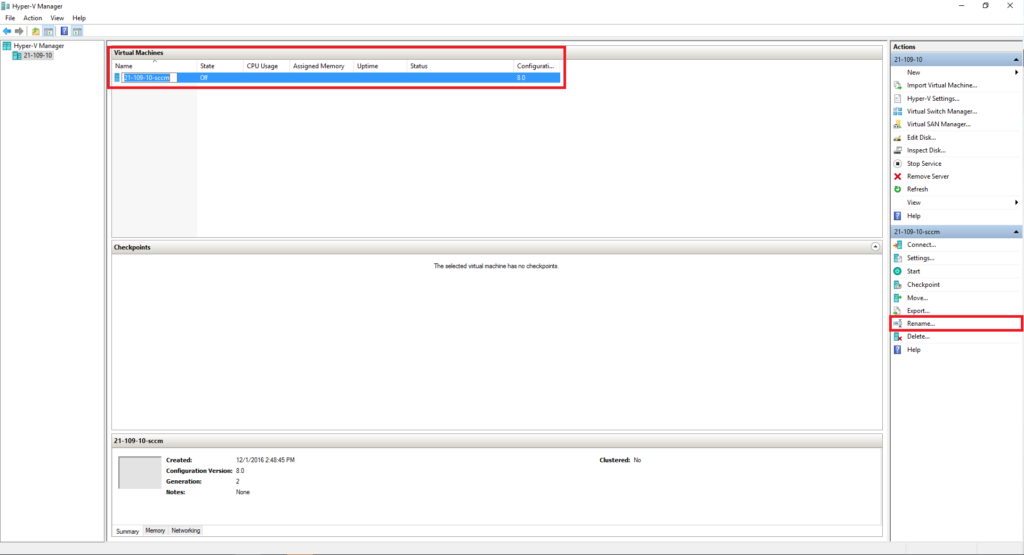Acciones con VM en Hyper-V Windows 10: Una guía para administrar máquinas virtuales. Some useful info about what you can do with Virtual Machine (VM) in Hyper-V Manager.
1. Import Virtual Machine – you may import to your Hyper-V early exported VM;
2. Editar disco – edit selected Hyper-V Virtual Disk (as example);
3. Inspeccionar el disco – show short information about selected Hyper-V Virtual Disk;
- Run your Hyper-V Manager, Haga clic en "Inspeccionar el disco";

- Select your “Disco virtual” and press “Abierto";

- Check the information and press “Cerca".

4. Conectar – connect to selected Virtual Machine to work with it;
5. Setting – open VM settings;
6. Comenzar – “Power-on” machine (if VM in “Apagado” state);
7. Checkpoint – create new checkpoint for VM;
8. Move – you can “Move” VM files and disks to another location;
9. Exportar – export VM for future import at another server;
Mejores prácticas:
- Disconnect “Disco virtual” from VM;
- Copy it to destination folder at another server;
- "Exportar” your VM;
- Go to another server and do “Import Virtual Machine";
- Connect your early copied “Disco virtual" y "Comenzar” VM
10. Rebautizar – rename the name of a VM in Hyper-V Manager (change only visible name, NOT folder or “Disco virtual” name);
- Run your Hyper-V manager and select “Máquina virtual";
- Haga clic en "Rebautizar” and enter a new name;

- Press “Ingresar” on your keyboard.
11. Borrar – delete VM from Hyper-V manager and VMs configuration file (after that manually delete “Disco virtual");
12. Help – don’t need an introduction.



















